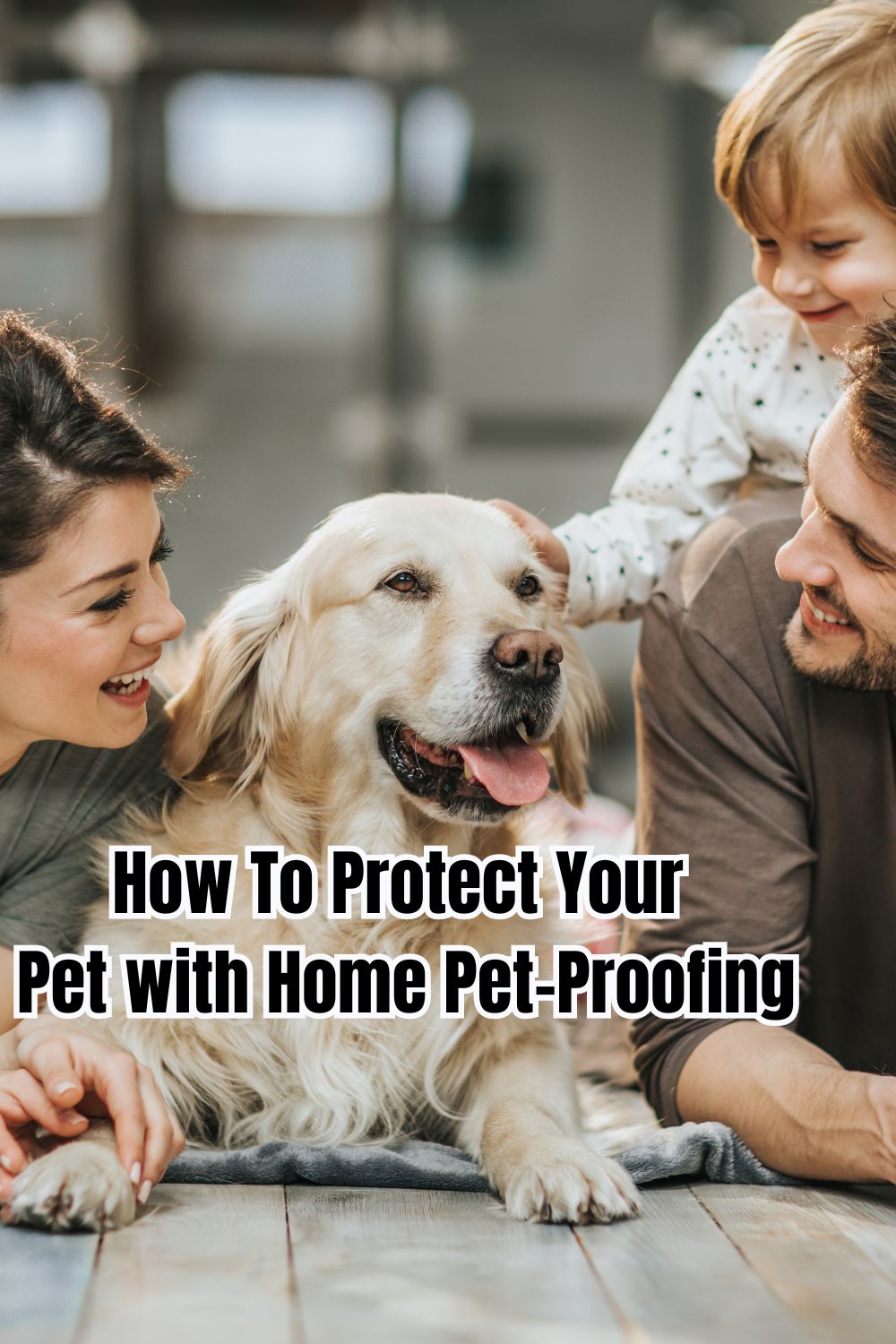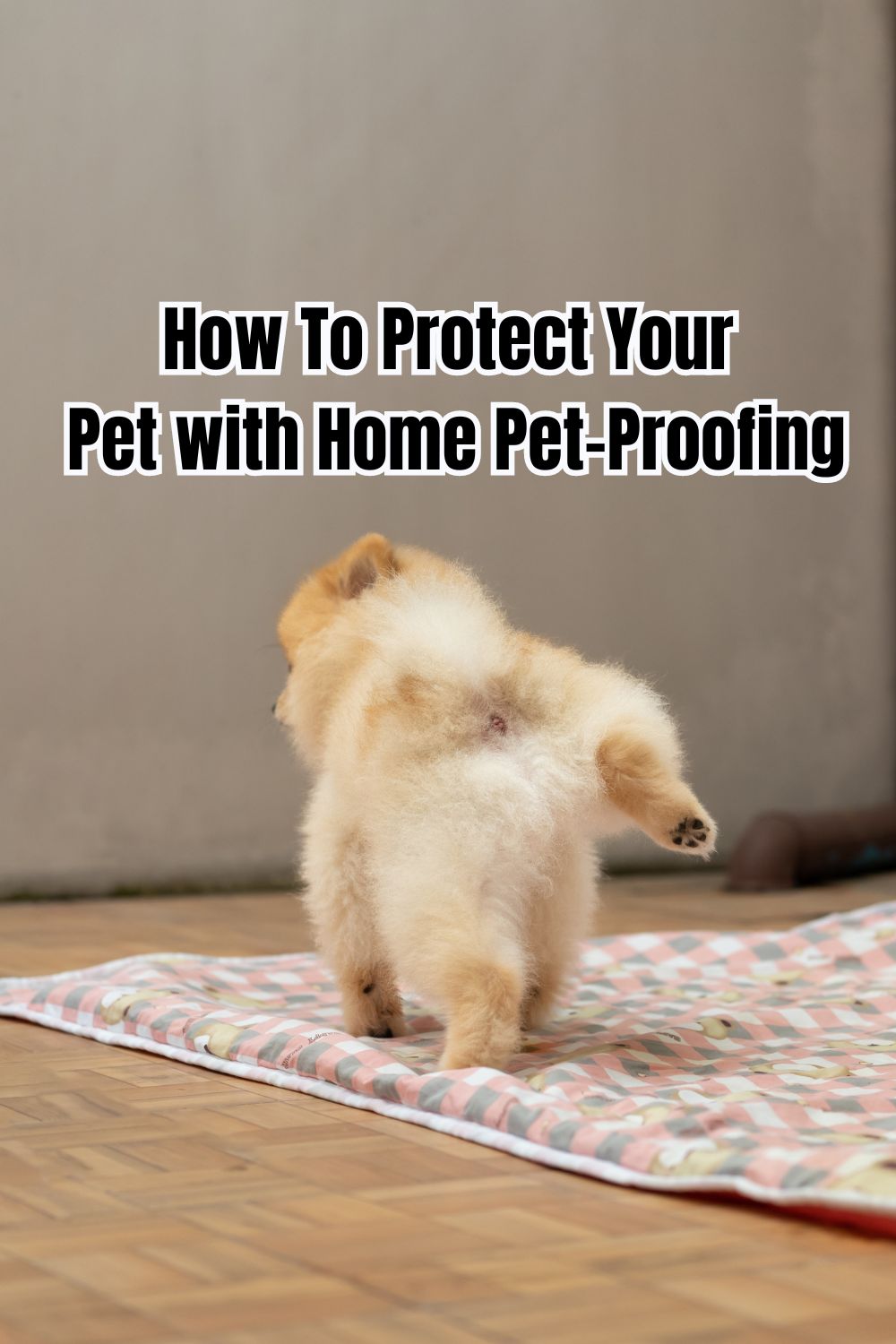Are you looking for ways on How To Protect Your Pet with Home Pet-Proofing? Then read on to learn more.
How To Protect Your Pet with Home Pet-Proofing
Bringing a new pet to a home is a lot like suddenly dealing with a toddler. Dogs and cats are naturally curious about their environment and, if they are indoors especially, they have all day to figure out every little nook and cranny of the place once they become a resident. While older animals will tend to focus on safety, comfort and safe places, younger animals like puppies and kittens will get into everything. Because of this fact, new pet owners really need to think about pet-proofing their home before the animal arrives. Or, if arrived, at least with getting started before something serious happens.
Serious Injuries Possible
Eating Items That Aren’t Food
With young pets especially, but older dogs as well, common injuries typically start with ingestion. Dogs practically eat everything and then decide if its worth eating or throwing up. And then sometimes they eat it again. Cats are a bit pickier, but they are easily convinced on eating food-like materials as well too, especially if sweet. So, eating things that end up being poisonous and can cause serious indigestion or internal harm is very common in a home. That includes everything from small children’s toys with leftover food or cosmetics on them to actual household chemicals that might taste sweet to animals who can’t think better.
Interactions With Other Animals
The second most likely injury type could be other animals. Puppies are extremely vulnerable to this issue if there is another cat in the home. How do dogs follow their curiosity? They do it with their nose and face. And getting scratched in the face and eyes happens more frequently than people expect. An eye surgery alone for a dog can easily exceed $3,500 to save the eye and prevent an empty socket effect. So, prevention is really worth the trouble of keeping pets separate, especially with a puppy and older cats.
Getting Stuck or Falling
The third injury possible involves getting stuck in something or falling from a serious height. In this one, cats are more likely to get hurt with big falls, not sure yet of their ability to jump or, worse, landing on something unstable. Alternatively, dogs can get themselves stuck in stairwells, doorways and gates. So, blocking these possibilities helps avoid serious injuries with broken legs or caught tails.
Prevention Starts with Pet-Proofing
So, with all this risk possible, how then does a pet owner fix their home with prevention in mind? It’s really a process of systematically changing the home with the pet in mind. Going room by room, each area needs to be changed and prepared for the presence of a pet that can be inquisitive. That includes the following:
- Bathrooms and Kitchens – Probably two of the more dangerous rooms, aside from the garage, the bathroom and kitchen tend to have the greatest concentration of chemicals. All of these products should always be closed when not being used, and contained inside drawers or closets that are not possible for the animal to open. Keep in mind that some cats and dogs are very intelligent and learn quickly how to copy humans, especially with using door handles and drawers. So, having additional open-resistance features on these containers should be used as well. Also, the kitchen tends to always have food, and a dog in particular will watch it keenly for anything that drops, constantly grazing the floor for anything worth eating. Always control food preparation on the countertop and block droppings as much as possible.
- Trash Containers – In any room where there is a trash can, even a small one for an office, it’s a risk for an animal to get into, especially poisonous trash like toiletry waste, food waste, chemical waste and paper cleaning waste. Dogs are notorious for sticking their noses in trash cans and literally eating anything interesting, so always use lids and keep the trash out of easy access. The most likely time a dog will try to get into a can is when humans are not around, given plenty of time to explore.
- Garages – Again, similar to kitchens, these are a repository for chemicals and hazardous materials. An animal should never be allowed to roam alone in them. Drippings from cars alone are extremely poisonous and interesting to an animal.
- Containment – Where animals are too young to be trusted to care for themselves or need to be contained for age or preventing their presence elsewhere in the home, human containment should be used. Walled pens are ideal, such as those from Clearly Loved Pets. Cages are not recommended as they can be painful for pets and create a sense of hurt and distrust of humans. Would you want to spend 4 to 6 hours a day in a cage? The animal is the same.
Prevention Saves Your Wallet Too
Protect your home from accidents, and you do an amazing job of prevention by protecting your pet as well. Veterinarian visits are incredibly expensive today, even with pet insurance. Avoid it altogether by keeping your pet protected and healthy instead.


Leave A Reply!